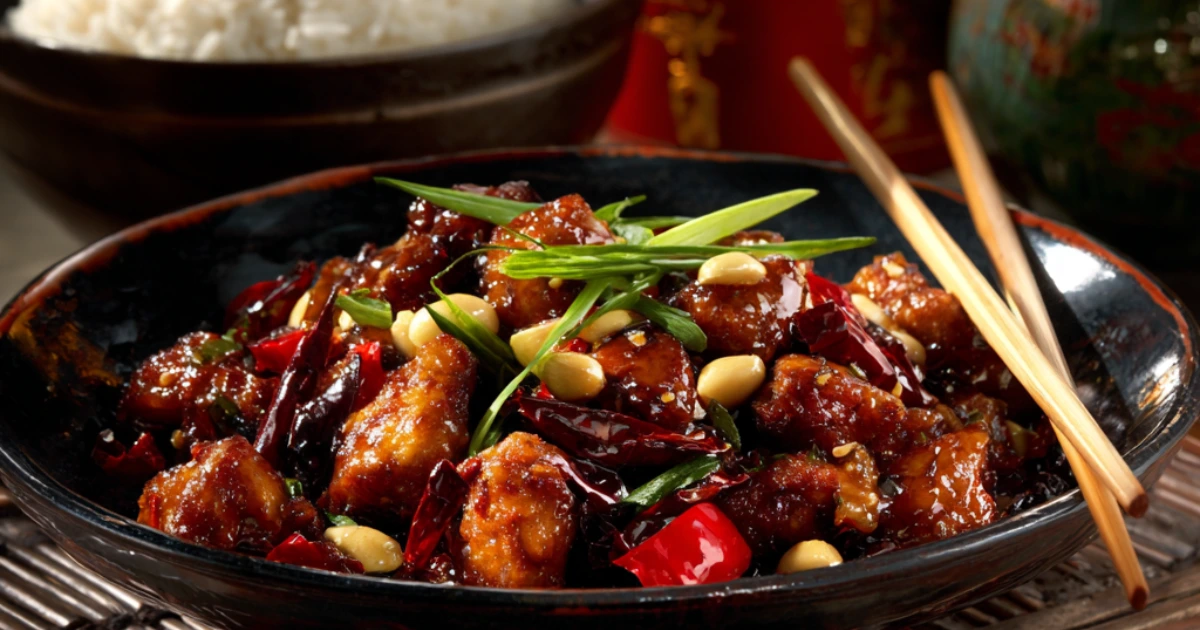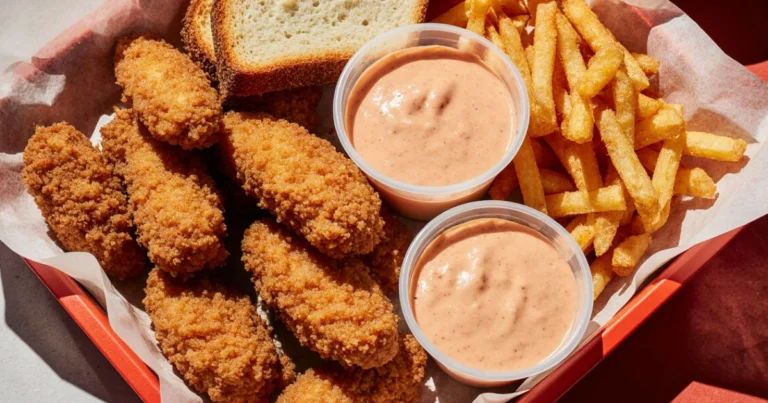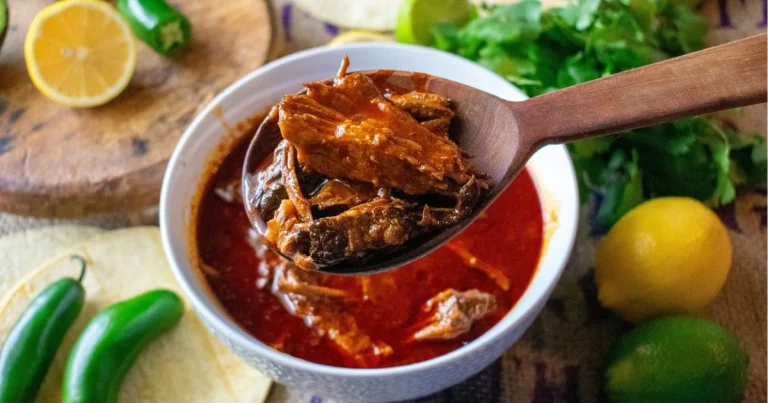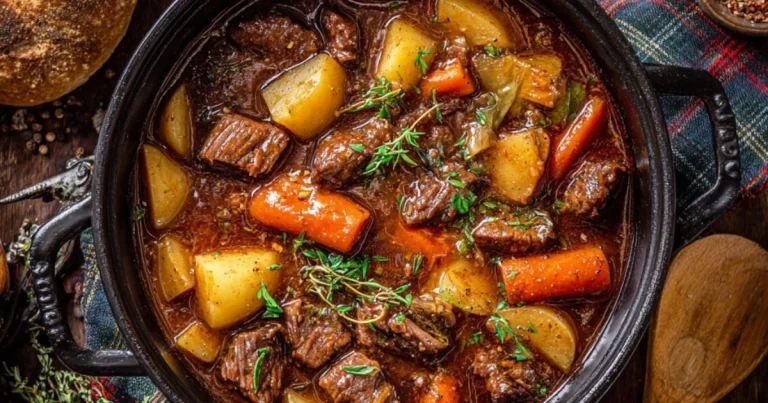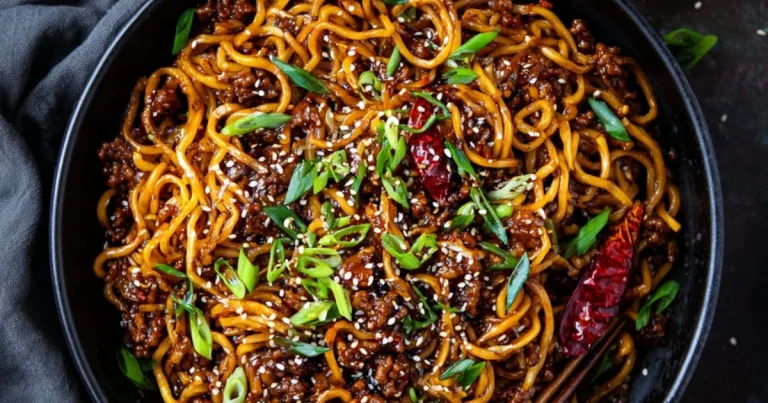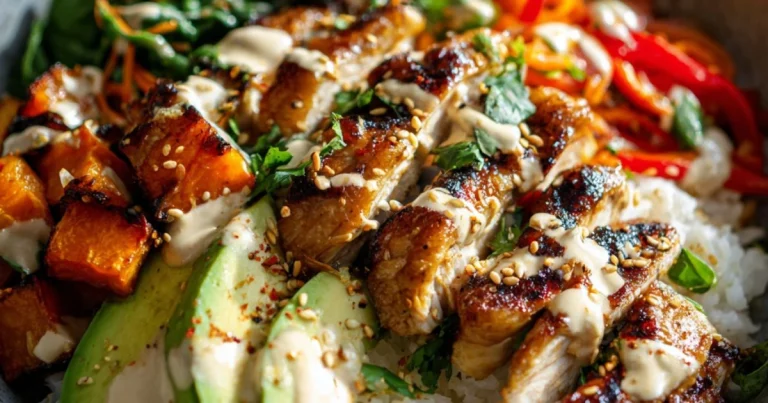Kung Pao Chicken
Kung Pao Chicken is one of the most beloved Chinese dishes worldwide. With its signature combination of crispy chicken, spicy chili peppers, and crunchy peanuts, it’s a dish that hits all the right notes—salty, savory, spicy, and a touch of sweetness. Whether you’re enjoying it at your favorite Chinese restaurant or cooking it at home, Kung Pao Chicken never fails to impress.
If you’re new to this classic dish or want to elevate your cooking, you’re in the right place. In this guide, we’ll explore everything you need to know about Kung Pao Chicken, from its rich history and essential ingredients to a step-by-step recipe you can recreate in your kitchen.
Explore the history of Sichuan cuisine here to understand the roots of Kung Pao Chicken.
What Is Kung Pao Chicken? – A Flavorful Chinese Classic
Kung Pao Chicken (宫保鸡丁) is a popular stir-fry dish from Sichuan cuisine, known for its bold and complex flavors. The dish typically features bite-sized pieces of chicken, roasted peanuts, dried chili peppers, and Sichuan peppercorns cooked together in a savory-sweet sauce. The result is a dish that’s both crispy and tender, with a distinctive numbing heat from the Sichuan peppercorns and a delightful crunch from the peanuts.
A Rich History
The dish is named after Ding Baozhen, a Qing dynasty official, who was given the title “Kung Pao” (a term meaning “Palace Guardian”) due to his noble status. While the dish itself has evolved over the centuries, it remains a cornerstone of Sichuan cuisine. Today, Kung Pao Chicken is commonly found both in Chinese restaurants and in homes worldwide.
Learn more about the history and evolution of Sichuan cuisine through this detailed guide on Chinese food.
Key Ingredients and Flavor Profile of Kung Pao Chicken
Essential Ingredients
To recreate an authentic Kung Pao Chicken, you’ll need the following ingredients:
- Chicken Breast or Thighs – Typically, boneless chicken breasts or chicken thighs are used, as they absorb the sauce and stay tender after stir-frying.
- Peanuts – Roasted peanuts add a crunch that balances the spiciness of the dish.
- Chili Peppers – Dried red chili peppers are used to infuse the dish with heat. Adjust the number to control the spice level.
- Sichuan Peppercorns – These peppercorns provide the signature numbing sensation that distinguishes Kung Pao Chicken from other stir-fry dishes.
- Soy Sauce – Adds saltiness and umami depth to the dish.
- Hoisin Sauce – This gives the dish its sweet flavor and depth of richness.
- Rice Vinegar – A splash of rice vinegar adds acidity, balancing the flavors.
The Flavor Profile
Kung Pao Chicken is all about balance—a harmonious combination of sweet, sour, salty, and spicy flavors. Here’s how it breaks down:
- Spicy – From the dried chili peppers and Sichuan peppercorns, the dish brings a moderate to intense heat.
- Sweet – Hoisin sauce and a bit of sugar provide a sweetness that balances the heat.
- Sour – A small amount of rice vinegar cuts through the richness, giving the dish a refreshing edge.
- Salty – Soy sauce is essential for that deep, savory flavor that ties everything together.
How to Make Kung Pao Chicken: Step-by-Step Recipe
Here’s how you can make a delicious batch of Kung Pao Chicken at home. Follow these easy steps for a crispy, flavorful stir-fry.
Ingredients
- 1 lb chicken breast or thighs, diced into bite-sized pieces
- 1/2 cup roasted peanuts
- 10-12 dried red chili peppers (adjust to your spice preference)
- 1 tablespoon Sichuan peppercorns
- 2 tablespoons soy sauce
- 2 tablespoons hoisin sauce
- 1 tablespoon rice vinegar
- 1 teaspoon sugar
- 1 teaspoon cornstarch (for marinating)
- 2 cloves garlic, minced
- 1-inch piece of ginger, minced
- 2 tablespoons vegetable oil
Preparation
- Marinate the Chicken
- In a bowl, combine the diced chicken with 1 tablespoon of soy sauce, 1 teaspoon cornstarch, and a pinch of salt. Let it marinate for 15-20 minutes. This will help tenderize the chicken and lock in flavor.
- Prepare the Sauce
- In a separate bowl, mix 1 tablespoon soy sauce, 2 tablespoons hoisin sauce, 1 tablespoon rice vinegar, and 1 teaspoon sugar. Stir well until the sugar is dissolved. This will be your sauce.
- Fry the Ingredients
- Heat a wok or large skillet over medium-high heat. Add 2 tablespoons of vegetable oil and swirl it to coat the pan. Add the dried chili peppers and Sichuan peppercorns. Stir-fry them for 30 seconds until fragrant—be careful not to burn them.
- Cook the Chicken
- Add the marinated chicken to the wok and stir-fry until golden brown and cooked through (about 5-6 minutes). Remove the chicken and set it aside.
- Combine & Stir-Fry
- In the same wok, add the garlic and ginger. Stir-fry for about 30 seconds until aromatic. Then, return the chicken to the wok and pour in the prepared sauce. Toss everything together, ensuring the chicken is coated in the flavorful sauce.
- Add the Peanuts
- Finally, toss in the roasted peanuts and stir well to combine. The peanuts should be evenly distributed, giving that signature crunch.
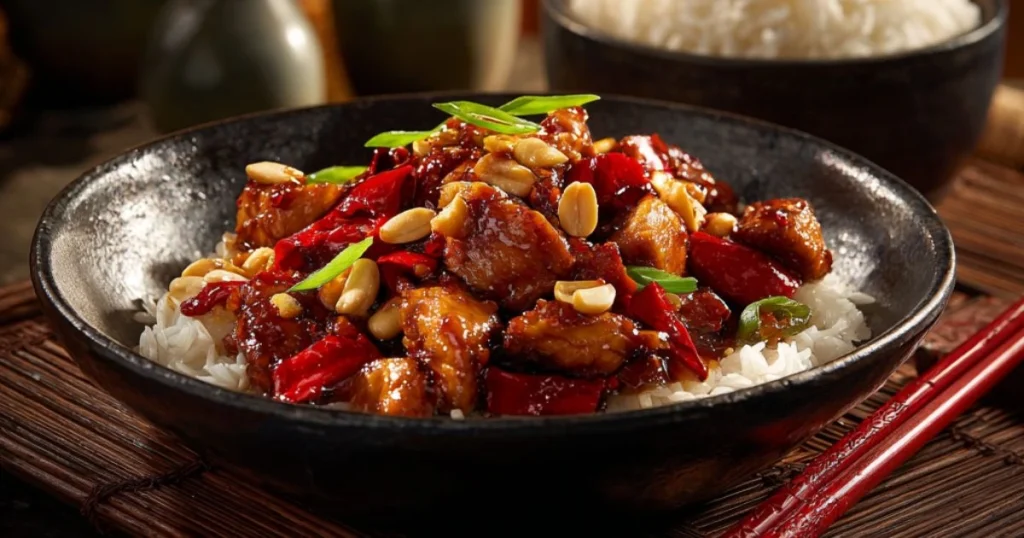
Variations of Kung Pao Chicken
While the classic Kung Pao Chicken is a staple in Sichuan cuisine, there are many exciting variations you can try to give this dish a unique twist. Whether you’re looking to adjust the spice level, switch up the protein, or make the dish vegetarian-friendly, there’s a Kung Pao version for everyone.
1. Traditional vs. Americanized Versions
The most well-known variation of Kung Pao Chicken outside of China is the Americanized version. In the United States, Kung Pao Chicken often includes bell peppers, onions, or even broccoli—ingredients that aren’t typically used in the traditional Sichuan version. While the American version tends to be sweeter and milder, the traditional Kung Pao focuses on the balance of spicy and numbing heat from Sichuan peppercorns and chili peppers.
2. Vegetarian Kung Pao
For those who prefer a plant-based option, making a vegetarian version of Kung Pao Chicken is easy. Simply replace the chicken with tofu, tempeh, or even mushrooms. Tofu, when pressed and stir-fried, provides a great texture and absorbs the sauce, making it a perfect substitute for chicken. You can also toss in extra vegetables like zucchini, eggplant, or carrots for added flavor and crunch.
3. Shrimp or Beef Kung Pao
Another popular variation is to swap the chicken for other proteins like shrimp or beef. Shrimp Kung Pao has a delicate sweetness, and the slight brininess pairs wonderfully with the dish’s spicy sauce. For a heartier version, beef Kung Pao is a fantastic option, giving the dish a rich, savory flavor that complements the spicy sauce beautifully.
4. Low-Carb Kung Pao Chicken
For a low-carb alternative, serve your Kung Pao Chicken with cauliflower rice or zoodles (zucchini noodles) instead of traditional rice. This modification allows you to enjoy the bold flavors of the dish while keeping it light and healthy.
No matter your preference, Kung Pao Chicken is a versatile dish that can easily be adapted to suit different dietary needs and flavor profiles.
This section offers a comprehensive look at Kung Pao Chicken v
Kung Pao Chicken Pairings
To make your Kung Pao Chicken meal complete, consider pairing it with these delicious sides:
Rice
- Jasmine rice is the most common choice, but you can also opt for brown rice for a nuttier flavor or fried rice for added texture and flavor.
Vegetables
- Serve the dish with simple vegetable sides like stir-fried bok choy, Chinese broccoli, or steamed dumplings to add balance to the meal.
Soup Options
- Hot and sour soup or egg drop soup are perfect complements, offering additional heat and a smooth texture to pair with the crunchy chicken.
Common Mistakes to Avoid
When making Kung Pao Chicken, a few mistakes can spoil the dish. Here’s what to avoid:
- Overcooking the Chicken – Chicken should remain tender, so be sure not to overcook it. Stir-fry it just until golden brown.
- Too Much Sauce – Use just enough sauce to coat the chicken. Excess sauce can make the dish soggy.
- Not Enough Spice – If you love heat, don’t skimp on the dried chili peppers or Sichuan peppercorns.
FAQs About Kung Pao Chicken
What’s the difference between Kung Pao Chicken and General Tso’s Chicken?
While both dishes feature fried chicken in a flavorful sauce, General Tso’s Chicken is sweeter, with a tangy sauce, whereas Kung Pao Chicken is spicier and includes the unique numbing effect from Sichuan peppercorns.
Can I make Kung Pao Chicken ahead of time?
Yes, Kung Pao Chicken can be made in advance and stored in the fridge for up to 3 days. Reheat in a hot wok to restore the crispy texture.
How do I make Kung Pao Chicken less spicy?
Simply reduce the number of dried chili peppers or omit the Sichuan peppercorns if you prefer a milder dish.
With this comprehensive guide, you’ll be able to make a delicious, authentic Kung Pao Chicken at home. It’s a dish that’s packed with flavor, easy to customize, and perfect for any occasion!
For more salad recipes,Discover our new Refreshing Asian Cucumber Salad

